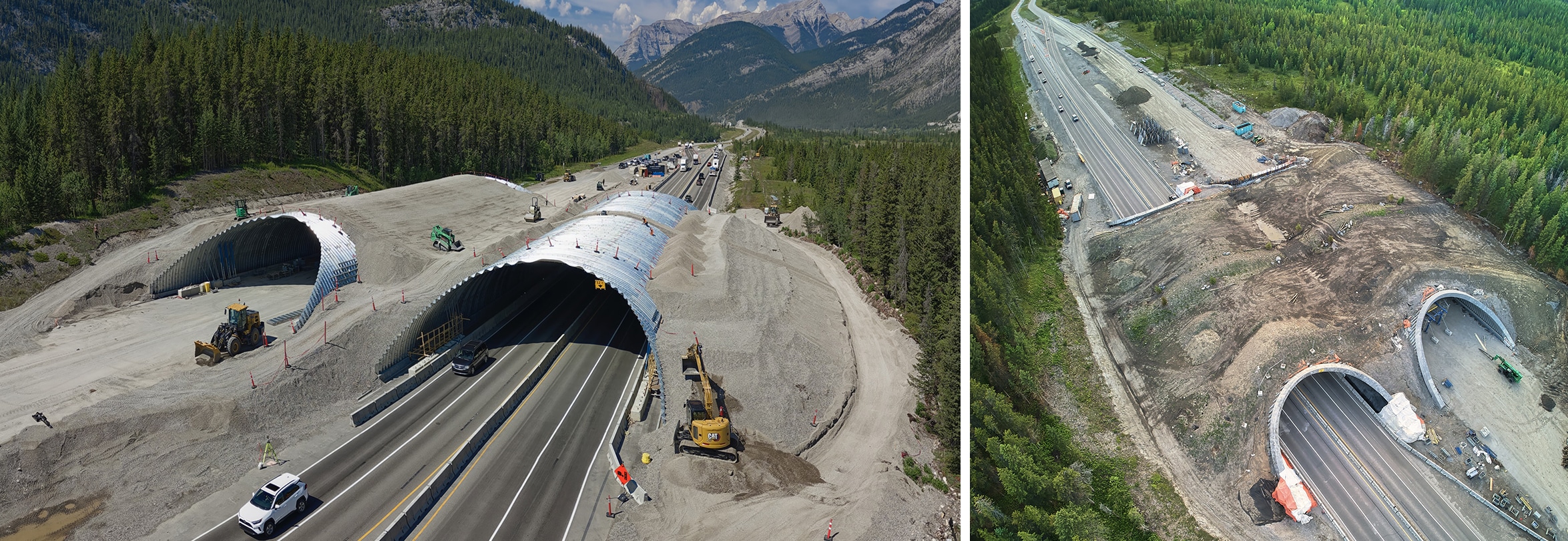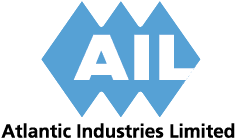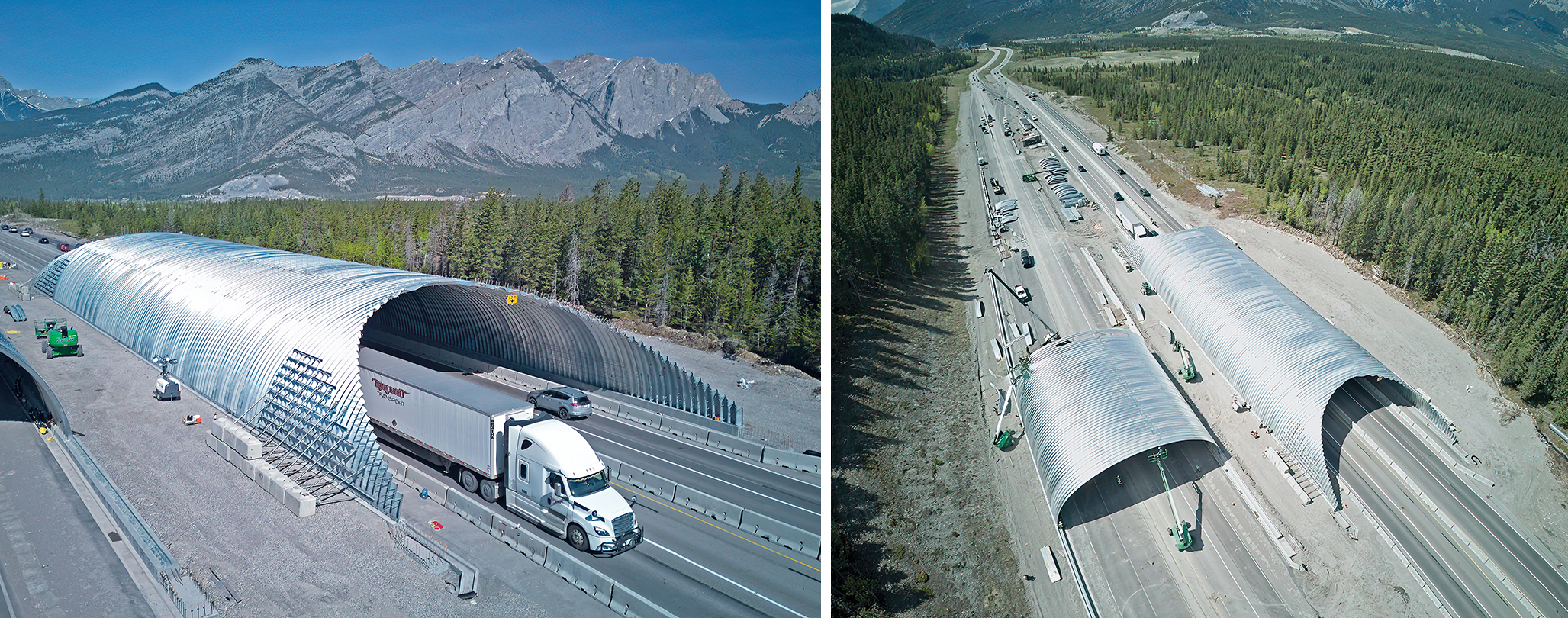May 18, 2023
Twin 24 m Ultra-Cor arches are taking shape quickly on a new wildlife overpass known as Stoney Nakoda Exshaw Wildlife Arch, just east of Canmore on the Trans-Canada Highway (Highway 1) in the Bow Valley Gap at Exshaw, Alberta.
July 2024 project video update >>>
August 2023 project video update>>
The Yellowstone to Yukon Conservation Initiative (Y2Y), the Stoney Nakoda First Nations and other organizations had been advocating for this overpass since 2012, when a study on highway wildlife mitigation along this busy route between Banff National Park and the Kananaskis River flagged this particular area as the one with the highest rates of animal-vehicle collisions.
This project represents a few firsts for AIL and wildlife crossings in the area:
- It is the largest Ultra-Cor project in Canada to date
- It is the first Alberta wildlife overpass outside of a national park
- It has bevelled ends to blend in with the natural surroundings
The AIL team worked very closely and very early on with our project partners at Alberta Transportation, Dialog (the consultant), PME (the contractor) and Y2Y to come up with the optimum size and geometry of the design.
Ultra-deep-corrugated Ultra-Cor offered various span/design options
With Ultra-Cor’s capability of spanning over six lanes of traffic (over 35 m), various configurations were considered: 2-lane divided, 4-lane divided, 6-lane divided, 6-lane undivided, 8-lane divided. The project team opted for twin structures of 24 m each to maintain the generous median and allow for the future addition of third lanes on each side.
Wildlife overpass site work began in April of 2022
Site preparation began in April of 2022 and the footings were poured in June. Our Ultra-Cor plate sections were manufactured and delivered to the site in sequence throughout the fall of 2022. Plate assembly started on the westbound lanes at the end of March 2023 and finished at the end of April. The eastbound lanes started assembly at the beginning of May and will finish in early June. During that time, traffic has been re-routed under the new westbound structure.
Once both structures are assembled, backfilling will take place up to about 4 m from the bevelled ends. From there, PME will pour the concrete collars and then continue with the remainder of the backfilling and tailoring the sloped embankments around the two arches.
AIL is a leader in wildlife crossing design
AIL has developed a leadership position in wetland and wildlife crossings, with many completed projects in our portfolio, including a similar overpass near Lake Louise in Banff National Park. In fact, Banff has more wildlife crossings than any other area in the world and is a key component of the Y2Y Initiative to create an interconnected system of wild lands and waters, harmonizing the needs of people with those of nature.
Members of our wildlife crossing engineering and design teams have benefitted from many years of interactions, workshops and conferences with organizations like Y2Y and ARC (Animal Road Crossings), an interdisciplinary partnership working to facilitate new thinking, new methods, new materials and new solutions for wildlife crossing structures.

Ultra-Cor creates the world’s strongest Buried Metal Bridges
With the introduction of Ultra-Cor, AIL has taken engineered structural plate to new dimensions in capability and performance. Ultra-Cor combines all the advantages of lightweight construction with previously unheard-of strength and durability for the largest and most extreme applications. Spans can exceed 35 m (115′). More about Ultra-Cor >
More about this project on the Y2Y website:
Onward and over: The Stoney Nakoda Exshaw Wildlife Arch is going up
AIL’s Wildlife Crossings and Fish Passages Project Gallery








